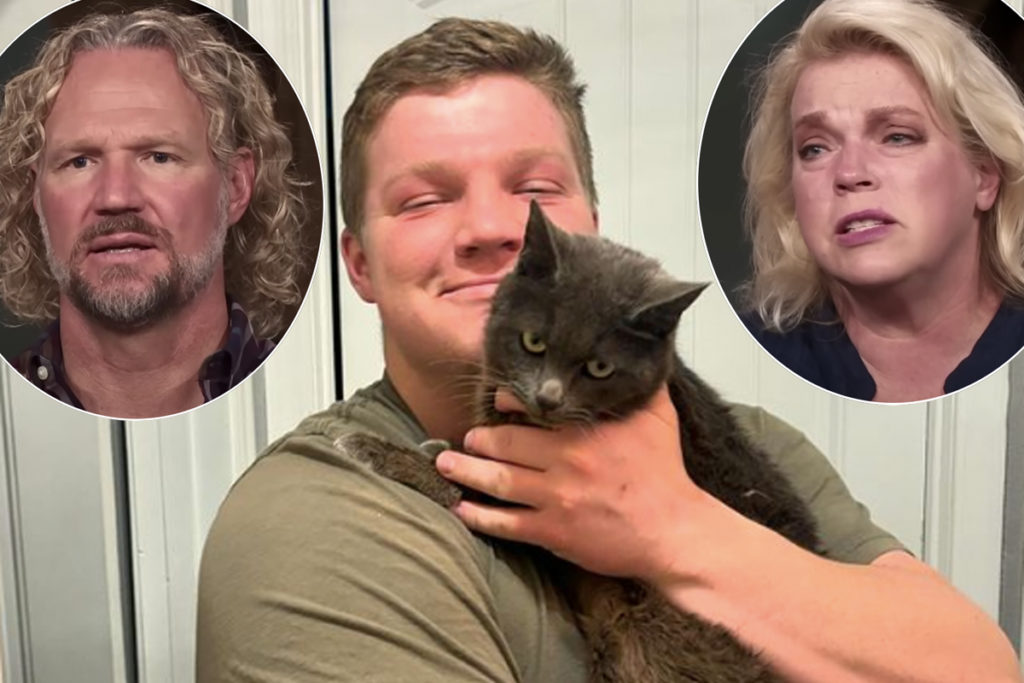.jpg)
It seems like every few weeks, there’s a new tornado related tragedy.
The worst part is, tornado season isn’t exactly over yet.
So thank goodness Dr. Patrick Mahaney is here with some tornado survival tips for you and your pet!!
Having grown up for a period of my childhood in the middle of the country, to this day I recall the scary scenes associated with the tornadoes that tore their way through the Plains States.
Upon moving to Indiana from Rhode Island as a kindergartner, I never expected to routinely partake in tornado drills. Although my family never directly suffered any major loss from some of the storms that shook our windows and knocked limbs off of trees in suburban Indiana, the memories of such experiences remain today.
The recent tornados striking Moore, Oklahoma brought back memories of the seemingly inescapable fear associated with nature’s brutal force. As I now live in southern California, I’m faced with a whole different brand of natural disasters (earthquakes, wildfires, mud slides, road rage, etc.). I’m not faced with the unsparing meteorological force of tornadoes.
Yet the media├óΓé¼Γäós coverage of the aftermath made me feel like I was right there. The day after disaster struck, a CBS Evening News reporter spoke to Barbara Garcia, who told the harrowing story of enduring the tornado and then losing her “little dog” Bowser (also known as Bowsie) to the storm. The assistant to the reporter had a very keen eye in noting some movement among the rubble. Moments later the rubble constraining an alert and determined Schnauzer was cleared and the fortunate pooch emerged, seemingly unharmed.
CBS news reporter Anna Werner shot a follow up video up with Garcia, who shared the good news that Bowsie was fine, but circumstance prevented him from getting any medical attention. “I was going to take him to the vet,” Garcia said, “but money is an issue. Nobody has any money. I can├óΓé¼Γäót get [money]. My bank is closed. I have no checks. I have no I.D. I have nothing. I even had to borrow a pair of my friend├óΓé¼Γäós reading glasses.”
Fortunately for Bowser and Garcia, Werner said that many good-hearted people heard of their situation and are helping the duo get back on their feet.
Another remarkable story emerged when a cat was discovered after having been missing for six days since the tornado. Dallas Morning News reported that 13-year-old Justin Hulme Rangel discovered Egor, a 13-year-old feline, who was thought to be permanently lost by his owners, Geoff and Jo Humann. Egor was found trapped in his litter box in the remains of the Humann├óΓé¼Γäós home. Rangel found the litter box squeezed against a table, looked inside, and found Egor. Rangel stated, “I figured after six days, he was gone. But he started to move and we dug him out.”
Oklahoma Department of Agriculture Food and Forestry’s pet triage performed Egor’s initial evaluation, then he was transferred to the Oklahoma State University College of Veterinary Health Sciences Teaching Hospital.
Dr. Danielle Dugat, who cared for Egor from the start, speculated that moisture provided by rain may have permitted Egor to survive so many days without access to familiar water sources. Dugat said, “Honestly, he looked good despite the fact he was dehydrated. He was still looking around and was very bright but very weak.”
PetMD is doing its part in “Helping Pets in Oklahoma” by sharing information on:
– The efforts of the Bella Foundation to help tornado victims through volunteerism and donation of supplies.
– Hill├óΓé¼Γäós Pet Nutrition Disaster Relief Network, which donated pet food and bowls to organize outlets for distribution to dogs and cats in need.
– The Blogger Disaster Response Network, a collaboration between BlogPaws, WorldVets, and the American Animal Hospital Association (AAHA).
Disasters like the Moore tornado always reinforce the need for pet owners to have a disaster preparedness plan. My top recommendations include:
Properly Identifying Your Pet
Safely returning home is more likely to occur if the lost pet wears up to date identification. Fit your pets with a cervical (neck) collar tagged or embroidered with at least their names and your phone number, e-mail, and address.
As collars and tags can fall off or be removed, have your veterinarian implant a microchip into your pet’s subcutaneous (fat) space.
Knowing Your Pet’s Location
The urgency of an emergency may cause your pet’s location to be unknown. Cats and small dogs escape stressors and harmful situations by seeking refuge under a bed, in a closet, or in another safe spot (as Egor did in his litter box). Larger dogs typically have a more obvious presence, but they can instinctually flee from any scene unbeknownst to their owner.
Always be aware of your pet’s location in your house, yard, or public space. Knowing a pet’s habits, including preferred locations for napping, nesting, or hiding, can improve the likelihood they’ll be found.
Securely Transporting Your Pet
Natural disasters often force people and pets to suddenly flee their homes. To ensure our pets’ in-flight safety, it’s important to have a means of providing secure transport.
Use a rigid or soft airline-approved carrier for cats and small dogs. The name, species, color, breed, and weight of your pet, along with your contact information, should be clearly featured on the carrier. For medium and large breed dogs, use a cervical collar or chest harness and leash.
My well wishes go out to all of the human and animal families of Oklahoma experiencing hardship after the Moore tornado.
Have a pet question? Email us at [email protected] or you can tweet them to Dr. Patrick HERE!! OR Check him out on facebook
[Image via Dr. Patrick Mahaney/Russel Baer.]
Related Posts
CLICK HERE TO COMMENT-
Categories




































